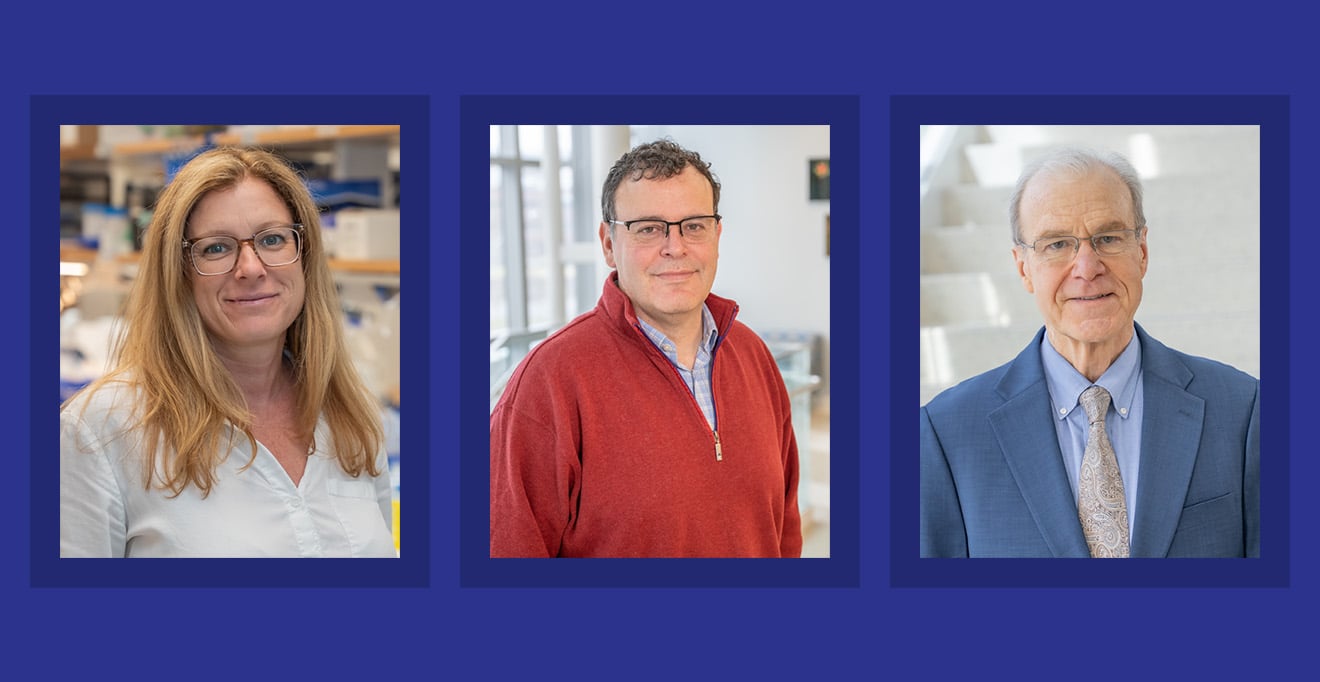Patients in a Phase I/II clinical trial conducted by UMass Chan Medical School of a dual vector gene therapy for GM2 gangliosidosis, which includes Tay-Sachs and Sandhoff diseases, exhibited a biochemical correction of the disease with minimal adverse reactions.
“Biochemically it worked,” said study investigator Heather Gray-Edwards, DVM, PhD, assistant professor of genetic & cellular medicine at UMass Chan. “We were able to induce production of the appropriate enzyme and that enzyme was functional. Although we didn’t achieve therapeutic levels, our thalamic injections ended up being safe in patients and the transgene vectors work. That’s an important step.”
Photo: Bryan Goodchild
Trial participants receiving the treatment maintained oral feeding for longer periods and experienced fewer and more controllable seizures. These results, published in Nature Medicine, provide an important basis for the further development of a treatment for Tay-Sachs, Sandhoff and other GM2 gangliosidosis diseases. Participants were treated at UMass Chan and UMass Memorial Medical Center, while Massachusetts General Hospital provided an independent assessment of the clinical impact.
“These are positive steps forward and UMass Chan is committed to finding a transformational therapeutic for these children,” said Dr. Gray-Edwards.
GM2 gangliosidosis is a group of inherited disorders, including Tay-Sachs and Sandhoff diseases, that results in the progressive destruction of nerve cells in the brain and spinal cord. These conditions are most often caused by a mutation in the HEXA or the GM2A gene, which prevents an enzyme called beta-hexosaminidase A (HexA) from properly breaking down large molecules inside the body’s cells. When this enzyme is deficient, GM2 gangliosides accumulates in nerve cells, leading to cell damage and death. There are several forms of GM2 gangliosidosis, including Tay-Sachs disease, Sandhoff disease and GM2 activator deficiency (AB variant).
The disease typically presents in infancy. During the first few months of life, children with the disease exhibit slow growth, developmental regression, poor muscle tone, seizures and a loss of motor function. Universally fatal, most children survive only a few years with the disease, but various other forms of the disease can occur in childhood, adolescence or even adulthood. There are no treatments for GM2 gangliosidosis.

Photo: Bryan Goodchild
Research by Gray-Edwards and Miguel Sena-Esteves, PhD, associate professor of neurology at UMass Chan, into the causes and potential therapies for GM2 gangliosidosis, Tay-Sachs and Sandhoff diseases has led to significant advances in the field, including development of a gene therapy vector used to deliver functioning copies of the defective genes that cause disease.
“This research is an example of the important work that our faculty is doing in our Translational Institute for Molecular Therapeutics,” said Terence R. Flotte, MD, the Elisabeth Chair for the Dean of Medicine, executive deputy chancellor, provost and dean of the T.H. Chan School of Medicine and senior author on the paper. “Driven by Dr. Gray-Edwards and Dr. Sena-Esteves, the institute leverages our extensive experience in researching and developing gene therapies for early-stage clinical trials so we can play a key role in moving therapies for rare diseases forward. It is so important to patients and families like those who participated in these trials that our research is providing hope for some help for this devastating disease.”
In the current study, using a hybrid approach, two harmless viral vectors were administered through injections to the thalamus and the spinal cord. These vectors deliver DNA instructions to brain cells that teach them how to produce the missing HexA enzyme. Once inside the nucleus, the vector-delivered DNA stays in the cells, allowing for long-term production of the enzyme.
The goal for scientists is to deliver enough of these DNA instructions via viral vector into as many brain cells as possible before disease onset with the intention of preventing the neuron death that cause the disease.
The current study included nine participants in four cohorts, with the administered dosage doubling for every cohort.

Photo: Bryan Goodchild
Historically, more than half of patients with GM2 gangliosidosis need to be fed via IV between 13 and 18 months of age. In this study, half of the cohorts remained on full oral feeds for at least 25 months with the two highest dose participants remaining on oral feeds until the end of the study (27 and 20 months respectively).
“This is encouraging because eating by mouth in an important quality of life outcome for the families of these children,” said Gray-Edwards.
Clinical tests showed that production of the HexA enzyme increased for all participants with activity surpassing two times the lower limit of normal. Additionally, participants experienced later onset of seizures, which were less severe, less frequent and more responsive to anti-convulsant medication.
“Nonetheless, the partial effects of the therapy indicate the need for continued improvements of the gene therapy,” said Gray-Edwards.
The next step for Gray-Edwards and the researchers at UMass Chan is to modify the dual vector delivery into a single vector. This would allow researchers to double the amount of therapeutic DNA delivered to the cells without having to increase the vector volume, which is a limiting factor. This would also allow for gene therapy treatments to be delivered at an early age, which may also improve outcomes.
The study was funded in part by the National Tay-Sachs & Allied Diseases Association, Cure and Action for Tay-Sachs Foundation, Matthew Forbes Romer Foundation and Blu Genes Foundation.
